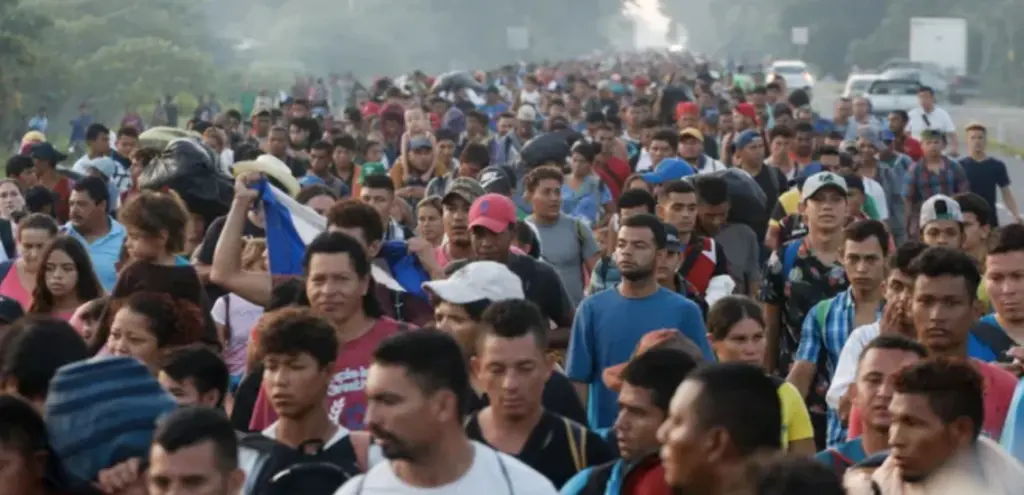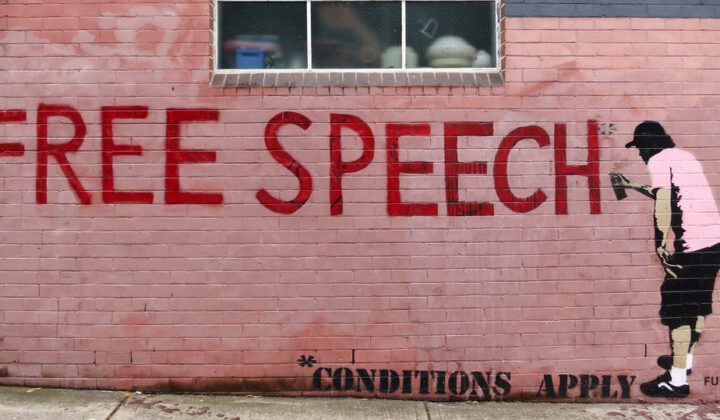Real wages are declining, a dictator is terrorizing Europe, and the pandemic drags into its third year—but don’t forget about immigration.
2021 set records for the most migrant apprehensions at the US-Mexico border, with more than 1.72 million people apprehended by the Border Patrol. In 2022, the numbers are poised to go higher. In January of this year, there were more than 150,000 encounters, almost double 2021’s historically high 78,000 encounters.
Then yesterday, the Biden Administration circulated their plans to end Title 42, a Trump-era policy which allows for the immediate expulsion of migrants encountered at the border because of the pandemic. A spokesperson for the Biden Administration acknowledged that “there will be an influx of people to the border” and added that they “are doing a lot of work to plan for that contingency.” But with immigration courts chronically underfunded and years behind on hearing immigration cases, it is difficult to believe that anything will change.
Still, the looming immigration crisis is running under the radar. While immigration was top of mind during the Trump presidency, it has receded from opinion sections and Democratic politicians’ speeches. It shouldn’t have. While the chattering classes moved on, the American electorate did not, and we’re gearing up for another populist backlash against Democratic priorities this fall. When the midterms roll around in November, immigration will be a top issue.
Immigration Politics
During Donald Trump’s presidential campaign and presidency, immigration dominated our national conversation. Trump won the political spotlight for demanding to see President Obama’s birth certificate and campaigned on a promise to “Build the Wall.” In office, Trump’s immigration policies turned heads: child separation, the Muslim ban, kids in cages. Immigration and nativism defined Trump’s presidency.
The Democrats, meanwhile, couldn’t look away. Everyone vying for the Democratic nomination for president in 2020 railed against Trump’s immigration policies. Biden promised to repeal Title 42 and restore the asylum process to what it was before Trump took office. During his speech accepting the Democratic nomination for president, Biden said “If I’m elected president, we’re going to immediately end Trump’s assault on the dignity of immigrant communities. We’re going to restore our moral standing in the world and our historic role as a safe haven for refugees and asylum-seekers.”
Then he won the presidency and the immigration debate receded into the background. But the crisis on our southern border persisted.
America’s Immigration Crisis
The number of migrants encountered at the border isn’t itself a problem. As long as the migrants can be treated justly, their claims legitimately heard, and a decision delivered swiftly, then absolute arrivals don’t count for much. But as the number of migrant encounters increased, so did the backlog of asylum cases before immigration judges. Immigration courts couldn’t keep up with arrivals, and cases piled up. According to research from Syracuse University, at the start of George W. Bush’s presidency in 2001, there were 149,338 cases in the immigration court backlog. 16 years later when Trump took office, that number had grown to 542,411.
The Trump administration pursued policies to make it more difficult for asylum seekers to stay in the US, including with his Remain in Mexico policy as migrants waited for their cases to be heard and Title 42, which led to their expedited expulsion. While both orders affected hundreds of thousands, the cumulative effect of the administration’s policies likely only slowed the work of immigration courts. In just four years, the backlog ballooned to a massive 1,290,766 cases.
Under Biden, the court backlog grows by the minute. At present, it sits somewhere over 1.6 million cases. For asylum seekers, that means an average wait of almost five years before they go before a judge, during which time they’re likely living in the United States. At the current processing pace, the Biden administration would have spent all four years just working through the cases they inherited, but the docket is expanding at the fastest pace on record.
As they wait for their hearings, asylum seekers are caught in limbo with little clarity into whether or not they will be allowed into the US for good, whether or not they can work in the US in the meantime, how they will be monitored, and when the United States will make a determination. Still, their odds aren’t bad. Over the past 20 years, almost two-thirds of asylum claimants were granted asylum or permitted to stay in the US for another reason. Despite the wait, or maybe in part because of it, those formally seeking asylum have a high likelihood of ultimately being permitted to stay in the US.
For asylum seekers and Americans of all political persuasions, this process is ridiculous. A left-leaning American might believe that our immigration policies are too stringent while a right-leaning American might believe that they’re too lax, but both will recognize that our inability to speedily adjudicate asylum claims is a serious problem. As the number of migrant encounters is set to rise, an already sluggish five year process will slow even more.
Immigration on the Ballot in 2022
Immigration might be out of the headlines, but voters never stopped focusing on it. When a recent poll asked Americans to select the most important issues facing the country, immigration ranked third, well ahead of issues like crime and drugs, voting rights, and foreign policy. While Biden’s approval ratings are struggling across the board, his approval on immigration sits at an abysmal 32 percent.
The Biden administration recognizes this is a political liability. In his State of the Union address, Biden delivered a line out of the Republican playbook: “If we are to advance liberty and justice, we need to secure the border and fix the immigration system.” Still, the administration’s steps to speed up the process, like recently allowing immigration officers to approve asylum cases themselves without ever sending the case to court, are insufficient.
For over a year, the Biden administration has relegated immigration reform to a secondary issue, which isn’t entirely surprising. While 67 percent of Republicans say immigration should be a top priority for the president and Congress along with 49 percent of independents, only 35 percent of Democrats agree. Immigration isn’t a Democratic priority since Trump left office, but the immigration system is no better than it was two years ago.
With the impending repeal of Title 42, immigration at the border could soar. The administration is warning of a “mass migration event” as people could claim asylum and join the many-years-long backlog, living in the US as they wait for their hearing. Politically, this will be poisonous for Democrats, and Republicans are ready to take advantage. As the Republican strategist John Thomas told Politico last year, immigration is “off the Richter scale in terms of importance for the Republican electorate.”
With Democratic interest waning, it’s no wonder the Biden administration’s interests are elsewhere. But the immigration system cannot fix itself, and the administration stumbled by not making bipartisan reform a legislative priority.
Biden has made it no secret that he decided to run in order to stop Trump. Yet once in office, Biden has let the issue which most excited Trump’s base and paved his way to the Oval Office reach a crisis point. Failing to tackle an issue this many Americans find important breeds the sort of populism which threatens our democracy. If Biden wants to be a “president for all Americans” and make good on his promise to unite the country, easing the looming border crisis should be at the top of his agenda.





